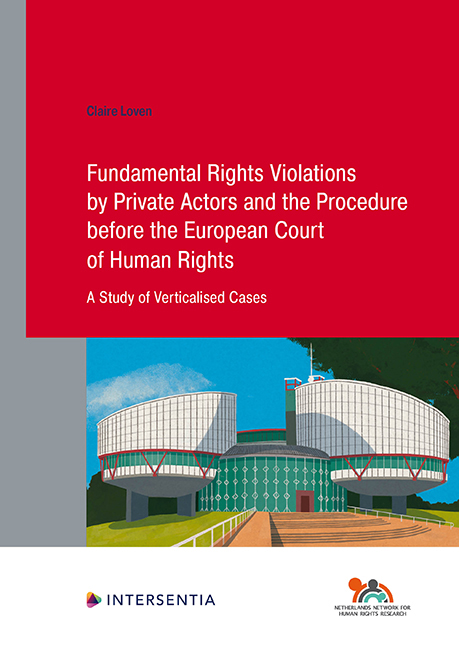 Fundamental Rights Violations by Private Actors and the Procedure before the European Court of Human Rights
Fundamental Rights Violations by Private Actors and the Procedure before the European Court of Human Rights In the previous part of this study, it was shown, first, that the Court offers substantive protection of Convention rights in a wide variety of horizontal relations through the concept of horizontal positive obligations. Second, the notion of verticalised cases was unravelled by looking into the origins of verticalised cases; that is, the characteristics of, and the private actors involved in the case at the domestic level, and the Court's approach to them. From this analysis it became clear that an important aspect of verticalised cases is the fact that one of the original parties to the conflict at the domestic level is not involved in the proceedings before the ECtHR. In other words, one of the original parties ‘disappears’ from the conflict when the case comes before the ECtHR. As shown in the previous part, this ‘disappeared party’ can have different characteristics, depending on the nature of the conflict. In verticalised cases related to one's surroundings, for example, it is often the private actor directly responsible for the act that had an impact on the individual's physical or non-physical surroundings who is not involved in the Court's proceedings. Meanwhile, in verticalised cases on a conflict involving the right to reputation and private life and the right to freedom of expression, it is the journalist, the media company or the person who allegedly suffered as a result of the right to freedom of expression being exercised who is not involved in the Court's proceedings. In verticalised family life cases concerning custody and access rights, one of the parents is not involved in the Court's proceedings, whereas in the other type of verticalised family life cases – concerning access to information about one's origins – it is the mother or father (or presumed mother or father), or, if one of the latter complains before the ECtHR, the child, who is not part of the Court's proceedings. Finally, in verticalised employer-employee cases, the employer is the party most likely not to be involved in the Court's proceedings.
In addition to the different characteristics of the disappeared party, there are differences with regard to the Court's approach to verticalised cases. More specifically, it follows from the analysis presented in Chapter 6 that, with the exception of cases related to one's surroundings, the Court generally approaches verticalised cases by examining whether a fair balance was struck between the competing rights and interests of two private actors; that is, the applicant and the disappeared party.
To save this book to your Kindle, first ensure no-reply@cambridge.org is added to your Approved Personal Document E-mail List under your Personal Document Settings on the Manage Your Content and Devices page of your Amazon account. Then enter the ‘name’ part of your Kindle email address below. Find out more about saving to your Kindle.
Note you can select to save to either the @free.kindle.com or @kindle.com variations. ‘@free.kindle.com’ emails are free but can only be saved to your device when it is connected to wi-fi. ‘@kindle.com’ emails can be delivered even when you are not connected to wi-fi, but note that service fees apply.
Find out more about the Kindle Personal Document Service.
To save content items to your account, please confirm that you agree to abide by our usage policies. If this is the first time you use this feature, you will be asked to authorise Cambridge Core to connect with your account. Find out more about saving content to Dropbox.
To save content items to your account, please confirm that you agree to abide by our usage policies. If this is the first time you use this feature, you will be asked to authorise Cambridge Core to connect with your account. Find out more about saving content to Google Drive.